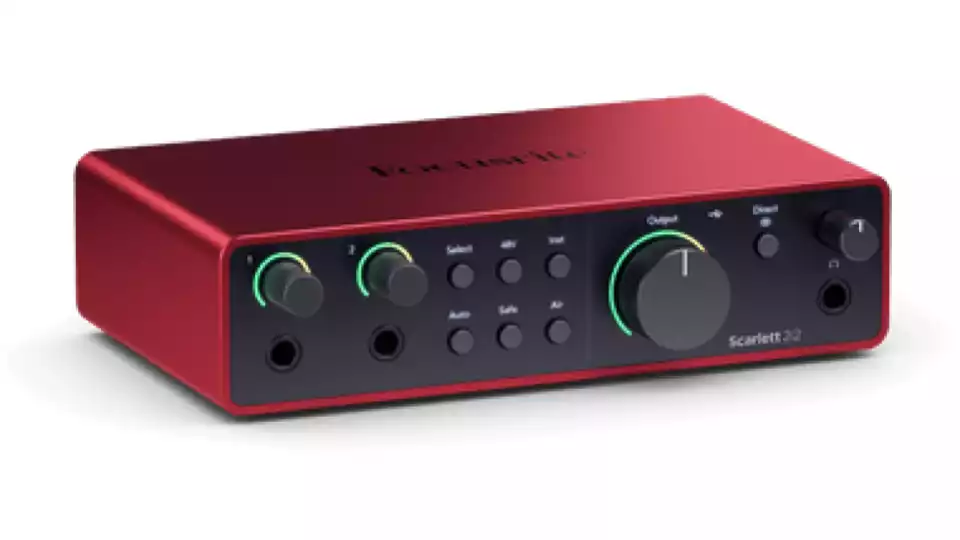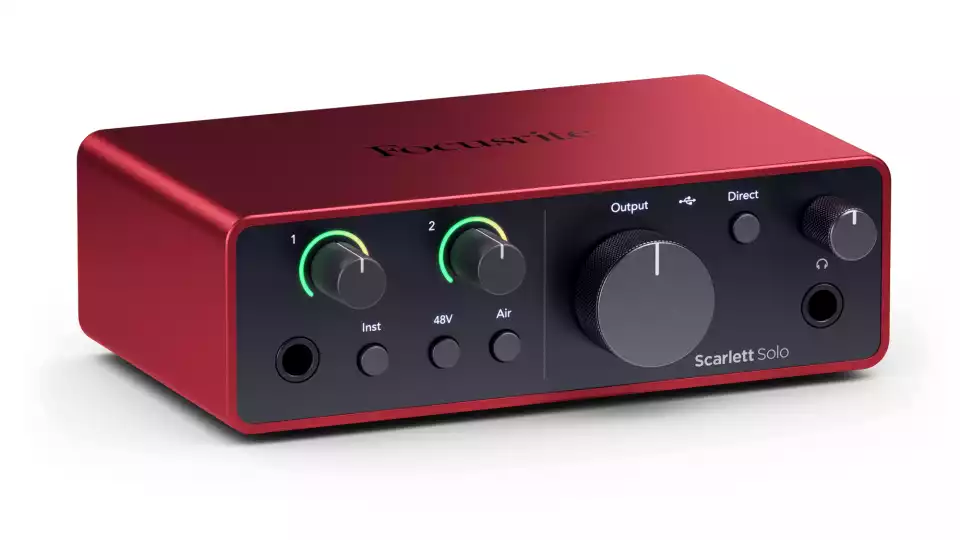Focusrite’s Scarlett 2i2 and Solo devices are two of the most popular USB audio interfaces for a reason. But which one is right for you?
In the past, I would have said that both devices are roughly equivalent, and to choose one based on the number of inputs you need. But ever since Focusrite launched the 4th generation Scarletts, the answer is… “it depends”.
This post will compare the Focusrite Scarlett 2i2 and Solo audio interfaces and help you figure out which one is the best value.
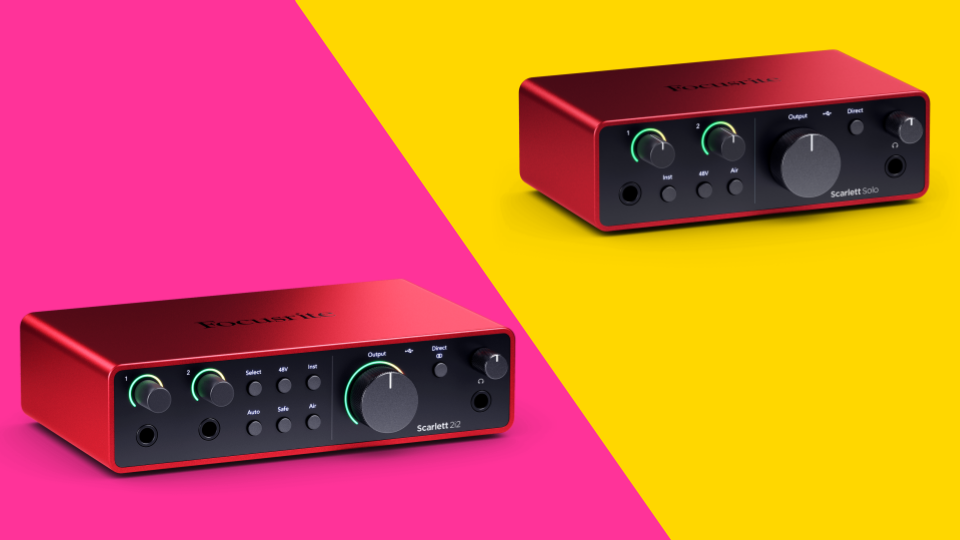
Quick Look: Focusrite Scarlett 2i2 vs Solo 4th Gen Audio Interfaces
Note: This article contains affiliate links. We may earn a commission if you make a purchase, at no additional cost to you.
|
$199.99
|
$139.99
|
|
|
|
|
|
|
- 2 rear-facing XLR inputs
- 2 front-facing line inputs
- 2 line outputs
- Connects via USB-C
- 69db gain range for mic preamp
- 62db gain range for line input
- 120db dynamic range for line output
- 115db dynamic range for headphone output
- Direct Monitor offers latency-free monitoring
- 2 Air Mode settings — hi-range boost and mid-range boost
- Auto-Gain and Clip-Safe mode for automated level adjustment
- Optional external power
- Includes software bundle
- 1 rear-facing XLR input
- 1 front-facing line input
- 2 line outputs
- Connects via USB-C
- 57db gain range for mic preamp
- 57db gain range for line input
- 120db dynamic range for line output
- 115db dynamic range for headphone output
- Direct Monitor offers latency-free monitoring
- 2 Air Mode settings — hi-range boost and mid-range boost
- Includes software bundle
Ease of Use
Scarlett interfaces are widely known for their simplicity and ease of use. The 2i2 and Solo are no different.
Both of them are essentially plug-and-play devices and require very little setup. On top of that, all their main controls are accessible from the front.
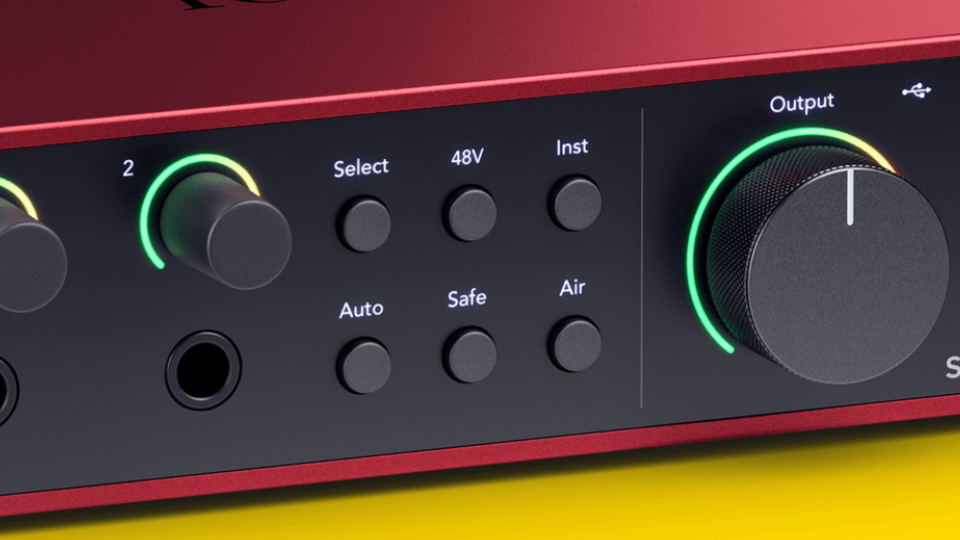
That said, I see one potential issue with the 4th generation 2i2 — the split XLR and line inputs make it seem like there are four total inputs, when in reality there are only two. That might confuse and frustrate some new users who don’t know that going in.
Inputs & Outputs
In total, the Scarlett 2i2 and Solo are both 2-in, 2-out audio interfaces. But there are some key differences between them.
- XLR Inputs: The 2i2 has two of them. The Solo has just one (hence the name).
- Instrument/Line Inputs: Again, the 2i2 has two 1/4-inch inputs, while the Solo just has one.
As a result, the 2i2 lets you record two XLR microphones or two instruments at the same time. The Solo can just do one at a time.
Alternatively, both devices let you record one mic and one instrument at the same time (such as recording yourself singing while playing guitar).
Audio Quality, Preamps, and Output Levels
Both the 4th generation 2i2 and Solo feature Focusrite’s RedNet converters. It’s the same circuitry found in their high-end products for an all-around cleaner signal. As such, they can both record 24-bit audio at up to 192 kHz.
As far as input levels go, the Scarlett 2i2 handily beats the Solo. Its preamps have a gain range of 69db, making it more friendly with gain-hungry microphones like the Shure SM7B. By comparison, the Scarlett Solo only has an input gain range of 57db.
Output levels are the same on each device, though. Line outputs have a dynamic range of 120db, while headphones can output up to 115db.
Auto-Gain & Clip-Safe Mode
These two new features are only found on the 4th generation 2i2. They’re completely absent on the Solo model.
As the name suggests, Auto-Gain will read your signal and automatically set it to the perfect gain level. Just speak, sing, or play for 10 seconds, then the interface will adjust the input level for you.
But sometimes, you might get super excited when recording and you’re louder than expected. This is where the Clip-Safe Mode comes in.
With this mode activated, the interface will automatically reduce your gain levels to prevent clipping and distortion, saving you from doing multiple takes.
Air Modes
Both interfaces come with the same two Air modes: Presence and Harmonic Drive. These EQ settings give your signal a boost in different ways.
- Presence — Boosts the high-range of a signal to help it cut through a mix.
- Harmonic Drive — Boosts a signal’s mid-range for more punch and body. It’s especially useful for instrumentalists, but vocalists can put it to good use too.
Connectivity & Power Supply
Both the 2i2 and Solo interfaces use USB-C to connect to computers and mobile devices. It also acts as the main power source.
But the 2i2 also features an optional USB-C port dedicated to external power supply. This has a few notable benefits:
- It lets you use the 2i2 4th Gen with smartphones and mobile devices that otherwise don’t provide enough power.
- You can use an external power source to ease the burden on your computer
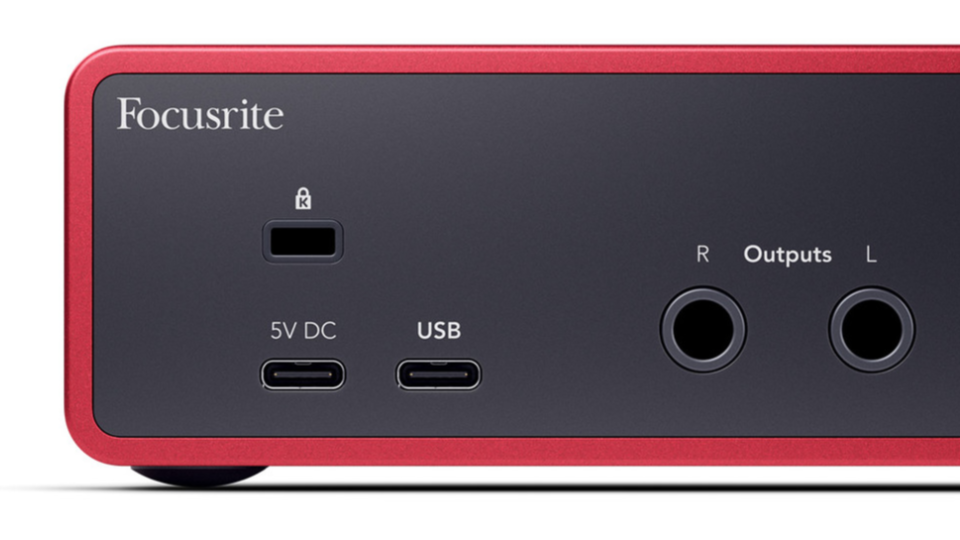
Bundled Software
Both the 2i2 and Solo Scarlett interfaces come with the same expansive suite of software, including Focusrite’s Hitmaker Expansion bundle.
While I’d never recommend getting an interface just for the software, it’s a nice bonus — especially if you’re relatively new to music production.
Here’s what you get:
DAWs
- Ableton Live Lite
- Pro Tools Artist (3-month subscription)
Mixing, Mastering, and Effects Plugins
- Antares Auto-Tune Access
- Brainworx Bx_console Focusrite SC
- FAST Balancer
- Red 2 & 3 Plug-in Suite
- Relab LX480
- Softube Marshall Silver Jubilee 2555
- Sonnox Vox Doubler
Virtual Instruments
- Native Instruments Massive
- XLN Audio Addictive Keys
- XLN Audio Addictive Drums 2
Subscription Services
- Landr 2-month subscription, plus 5 free masters
- Splice 3-month subscription
Who Is Each Device For?
Both the Scarlett 2i2 and Scarlett Solo are beginner-friendly audio interfaces with different types of users in mind.
Scarlett Solo – The Solo is good if you’re one of these people:
- Singer-songwriters who just need a basic interface for solo vocals and instrumentals.
- Streamers, podcasters, and content creators who typically record by themselves.
- Musicians and creators who want a high-quality audio interface, but want to save a little money.
Scarlett 2i2 – The 2i2 is good for the following people:
- Musicians who want to record in stereo.
- Musicians who record multiple signals at the same time.
- Podcasters and content creators who record two people at the same time.
- Creators who want to take advantage of the Auto-Gain and Clip-Safe features.
Which Device Is the Best Overall Value?
Even though it’s a bit pricier, the Scarlett 2i2 offers way more bang for your buck.
It does everything the Solo can do, comes with more inputs, and has additional features like Auto-Gain and Clip Safe.
Plus, the improved preamps make dynamic microphones like the Shure SM7B more viable. Long-term, it could save you from buying external preamps or signal boosters.
A super-reliable audio interface that's perfect for any home studio. The 2i2 offers two inputs with built-in preamps for recording higher-quality audio. Plus, the new Auto-Gain features takes out the guesswork in setting input levels. It's the perfect, easy-to-use interface for any musician and podcaster.
- Improved gain makes some dynamic mics more usable
- 2 Air Mode settings — hi-range boost and mid-range boost
- Auto-gain and Clip Safe modes take out guesswork in setting input levels
- Rugged build quality
- Includes software bundle
- Split XLR and line inputs may confuse new users
Compare The Scarlett Series to Other Popular Interfaces
Check out these other head-to-head comparisons between the Scarlett series and other audio interfaces:
